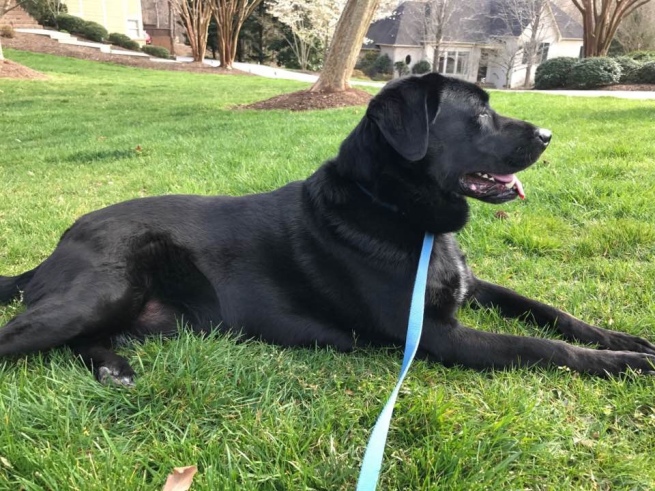“Solvitur Ambulando” – It is solved by walking, 2017 Lenten Labyrinth Walks (walk 31/40), private labyrinth, Cumming GA:

Today I ventured north of Atlanta to Cumming, Georgia. Here was a farm surrounded by new developments. This labyrinth was built by the mother of one of my childhood best friends. I noticed Mrs. W on Facebook and connected with her. This was the second time I’ve had the joyous privilege of walking her labyrinth. This time I walked with my sister, too.
We arrived late morning and knocked on the door. And Mrs. W answered. I introduced my sister and she introduced us to her charming artsy electric home. We immediately felt at home. One of my favorite things in this house is the wall of silhouettes. Some are very old and some new. There are silhouettes of Mrs. W, silhouettes of her grandchildren, but more recently, are the custom silhouettes she has had done for her daughter’s wedding invitation (my friend’s wedding invitation and probably my favorite wedding invitation of all time), a silhouette of Mrs. W and her brother to commemorate their 80th birthdays, and one that is a sign (click below and you can see the actual sign) for a walking trail in New York City that commemorates her grandfather John Finley who was editor of the New York Times. (https://en.wikipedia.org/wiki/John_Huston_Finley?wprov=sfsi1)
Dr. Finley was New York’s most peripatetic philosopher. Indeed, he had covered half the world afoot, watching the human scene with kindly eyes. . . . But it was over this peaceful and marvelous Island of Manhattan that he liked most of all to wander, counting that day lost when he had not checked off at least 10 miles. Once each year he walked entirely around the island, covering part of that promenade that now bears his name. Today, because it does bear his name and because it perpetuates his walking image wrought in iron by an artist who knew him in his forward-tilted stride, it will help others see with his understanding eyes the shimmering waters that girdle us, the towered silhouette of the city and all the friendly passers-by who give life and meaning to the Manhattan panorama.
Source: John Finley Walk – I’m Just Walkin’, http://imjustwalkin.com/2014/09/15/john-finley-walk/
And then we venture outside. Just walking out in the beautiful sunshine gets me excited. And hearing Mrs. W tell my sister about her labyrinth and how she came to build it was equally energizing. But before we get to the labyrinth, Mrs. W points out her “stump garden.” I have heard of rock gardens, but, never in my life, a stump garden. The centerpiece of the stump garden is the enormous stump of a beautiful oak tree that had been in center to the front yard. We had noticed the picture when we were looking at the silhouettes.
Next up was the labyrinth. It sits in the field surrounded by trees. Mrs. W decided she wanted a labyrinth and so she researched it on the Internet, came up with the dimensions of the Chartres labyrinth, brought in her landscaper and the two of them set out to place the rocks in her field and make a Chartres labyrinth.
The three of us then talked and laughed and walked (and MS and Mrs W pulled weeds).
After lots of hugs and a few pics, my sis and I headed to Blue Ridge GA for lunch with her husband and his childhood and lifelong best friend, a friendship of over 50 years!
My route today was Cumming GA, Blue Ridge Ga, Franklin NC, Highlands NC, Brevard NC, Shelby NC to to Charlotte.
Things I observed and/or learned about today…
1. The people who love banana putting, have differences of opinion with regard to the ripeness of the bananas used. In the group that I was in, it ranged from on the green side to almost black.
2. That sometimes the best marriages are where the husband and wife live in separate houses right next to each other.
3. I saw my first beaver crossing the road. Funny, but I have seen dogs, cats, turtles, foxes, coyotes, deer and even a bear cross the road, but I’ve never seen a beaver until today. Why did the beaver cross the road?
4. What makes the Blue Ridge Mountains blue?
5. How many communities have a road named “No Name Road?
6. Solar farms are big in this corner of the world. I was not expecting to see them in the foothills of the mountains of NC.
7. On the mountain road leading into Highlands, beautiful mountain streams and waterfalls :-).
8. When I see you Lake Toxaway from the road, my heart sings. There are a couple places in the mountains that just bring me home, even though I’ve never had a mountain home. Lake Toxaway and the Westervelt cabin are two of them.
9. The road from Toxaway to Brevard is being “straightened.” I have to wonder what economic benefit or reduction of economic loss justifies the great expense of blasting through a mountain side to straighten the road.
10. I think I could live in my car …
3.31.17










You must be logged in to post a comment.